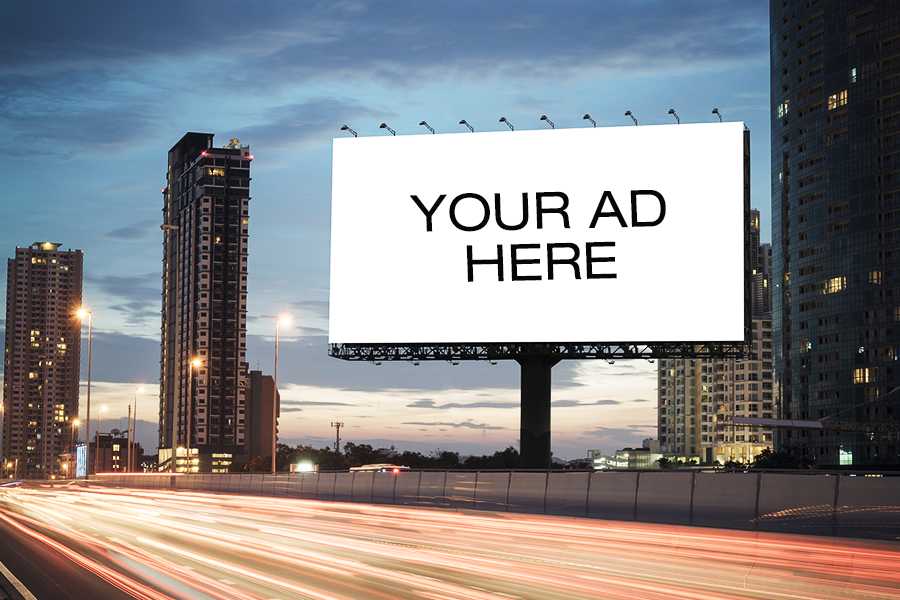
Place of picture-taking in driving growth for the OOH industry
By Kingsley Onwukaeme
“With the right picture, even the worst of billboards can be sold and with the wrong picture, even the best of billboards can be rejected.”
Today’s Out-of-Home (OOH) advertising offers more creative avenues when it comes to businesses of getting out their message. OOH is highly adaptable and billboard advertising is just one aspect of its unlimited marketing potentials. Billboard advertising utilizes large-scale print to market a company, brand, product, or campaign. Since billboards are placed in high traffic areas, it is an effective method of building brand awareness.
These billboards are usually located near high traffic areas such as highways and these locationsare perfect for local businesses and big brands to get their names out there.According to the Arbitron National In-Car Study, 71% of people consciously look at billboards when driving. Despite the growing forms of transportation, research suggests that Nigerians, especially those in Lagos, Abuja and Port Harcourt spend almost 300 hours each year in vehicles, of course, this can be attributed to the high volume of traffic in these areas. This is inclusive of Abuja.
Because of this reason, location is everything when it comes to billboard advertising. Traffic speed, travel destination, and proximity of billboard to the road all influence the effectiveness of the billboard itself. This is why media buyers and clients are sure to evaluate several locations and visit them before committing to billboard advertisement. One of the surefire ways they are able to carryout this evaluation is through the pictures provided to them.Images are OOH owner’s opportunity to demonstrate the proximity of the sign and quality of the location. These images are the OOH agency’s proof of a quality location though, definitely not proof of performance.
Therefore, recently, I had the privilege of running a refresher training for our media partnersunder the umbrella of Rapid-Xtra, a bespoke OOH Media Planning and Buying agency from the MediafuseDentsu Group in Nigeria, on “The Place of Picture Taking in Driving a better OOH Industry” in Nigeria. Some of the insights I shared with our partners is what I will be sharing here.
Having worked on the out-of-home (OOH) strategy and planning side for a considerable length of time, I have seen a wide variety of billboard images that represent an OOH agency’s ‘best efforts’ seeking consideration for purchase of their space. The images are used as an inducement to buy a particular location. Every OOH owner pursues to present the best possible image of their OOH inventory. Sometimes, the images submitted makes you wonder about the quality of the location and even about the agency that submitted it.
Drawing largely on my experience on and off the field in this market, I have come to observe that OOH Advertising is a picture-driven business. This is because in the business, seeing is definitely believing. In fact, your image can sell or sack your board. Thus, with the right picture, even the worst of billboards can be sold and with the wrong picture, even the best of billboards can be rejected.
I have been fortunate to literally view thousands of different OOH owners’ photo sheets working from the agency planning of the fence. So, what makes for a good billboard photo? The following paragraphs are my modest attempt at demystifying photography as far as OOH is concerned.
Telling the right kind of stories with the right kind of pictures/images
Taking the right kind of picture depends on the story you want to tell and the purpose. A good picture can tell the right kind of story of your board in four unique ways: environmental, visibility, material status and board location. These are further broadly categorized under two purposes: for proposal-environmental, visibility and board location, and for compliance-visibility and material.
In telling environmental stories about your board with your images, it is important to capture traffic-both vehicular and human at peak periods for example,don’t just send yourteam out to the interstate and have them slow down to a near dead stop while your photographer snaps just anyhow photograph. It is imperative to capture important landmarks, convergence points or other human activities in relation to the structure.
In telling a visibility story with pictures, the board should be captured from the farthest point of visibility. Take a shot from traffic stop point, e.g., from atraffic light or Junction. To take a visibility shot from a range of 75-100 metres to show the opportunity to see situation of campaign keeping the distance so that the viewer can confirm the clarity of the structure from a distance.
For material status stories with images, pictures must be taken at the closest point to show the displaying material to confirm tensioned and seamed points to guard against looming tear, from a range of 25m-50m.
The material status image is different from the board location story which ideally is your geo-tagged picture!This is taken at the foot of the billboard structure to ascertain the exact spot on the Global Positioning System (GPS) using the latitude and longitude.
General tips for getting good pictures that sell your board
Always take pictures from the righthand side of traffic.
Stand on the side of the traffic facing/moving towards the billboard whether the board is on the left, right or head-on. Ensure to position the camera on the same side of the road as the Outdoor would typically be viewed. As professionals, whenever we received a photo where the camera was positioned across the street looking backwards or sideways to the sign of interest, we know there is a problem.
Shoot at street level — no rooftop perspective, bridge/overpass or drone photos.
Photos taken from a position other than where the intended impression is counted, is misleading; a red flag to buyers. Position the camera at the same street level as the eyes of the audience. If I see another photo where the camera is at roof top level peering down on the sign, I may consider not buying.
Keep it real. Keep the trees, light poles, wires, and obstructions. Stop using Photoshop or other software refinements to obfuscate, which misleads.
Make sure the sun is in front of the billboard facenot behind the face in the background. Have the sun at your back when you photograph the billboard. Pay attention to the angle of the sun falling on your subject in relation to the direction you are shooting. If behind the billboard, it will usually create a shadow darkening the image or creative. Wait for the right time of day for the sun to be in position. Sometimes, it is simply a case of moving yourself into the appropriate position.
Kingsley Onwukaemeis a Location Marketing Expert and Innovator as well as a Media Manager at RapidXtra.




Comment
No comments found.